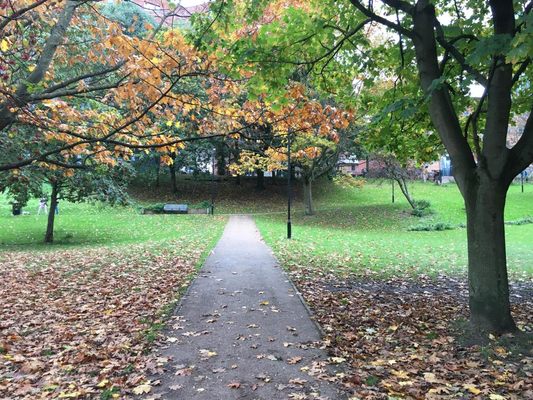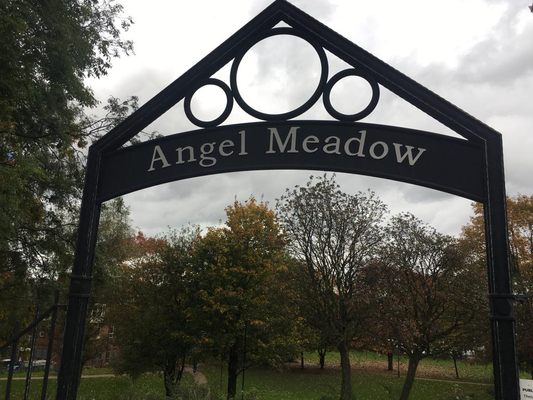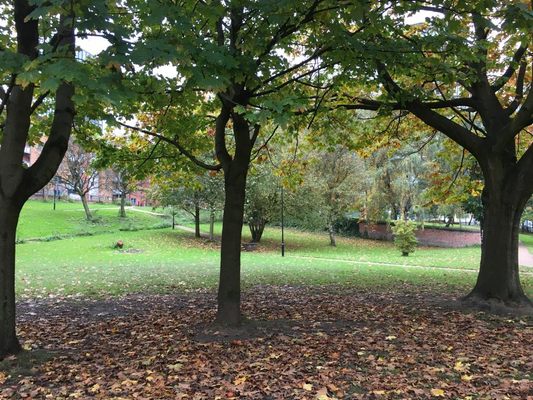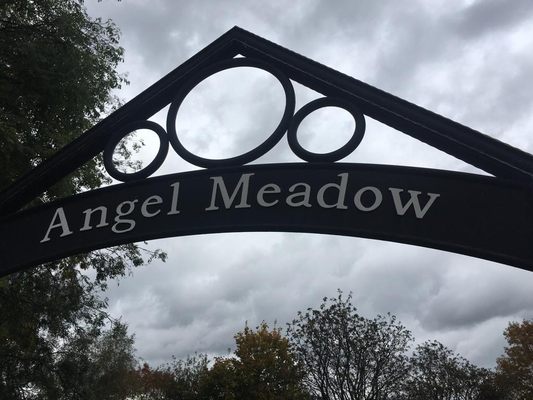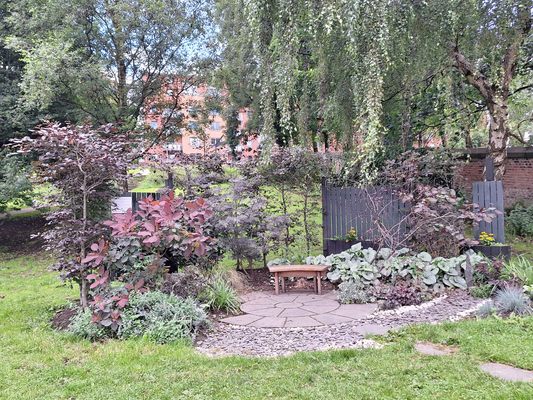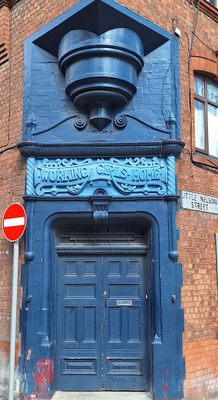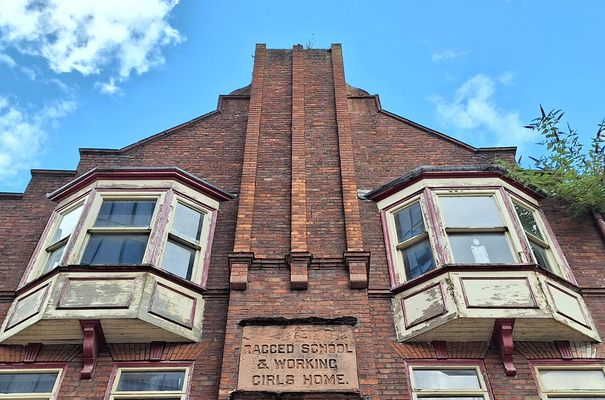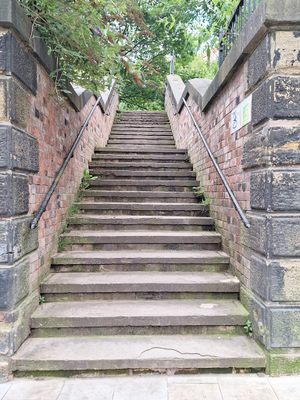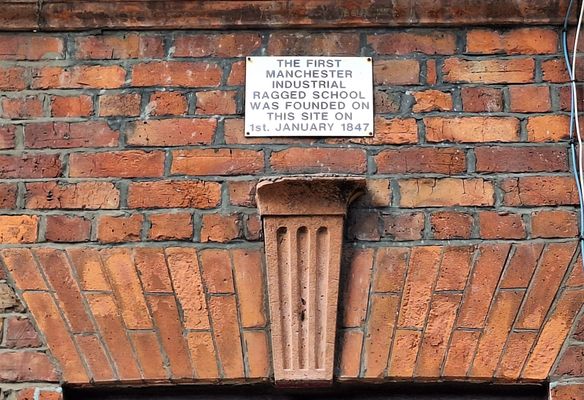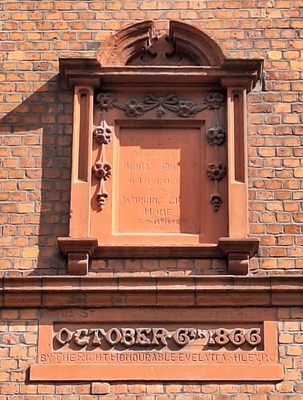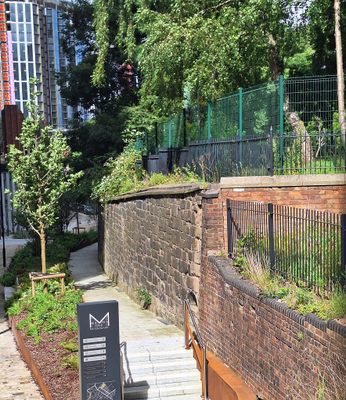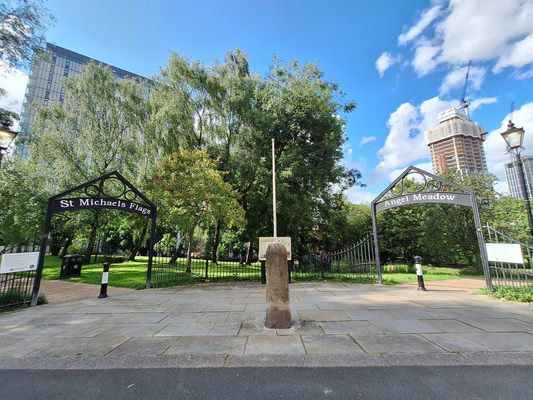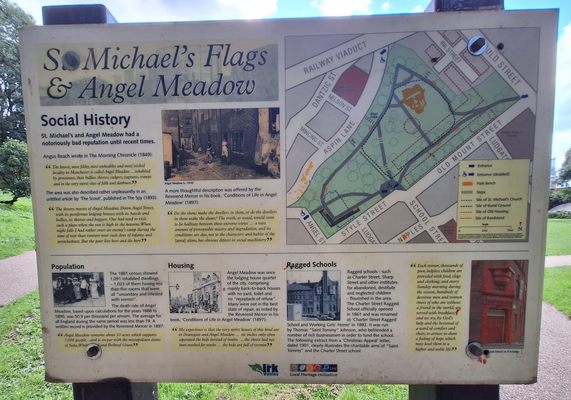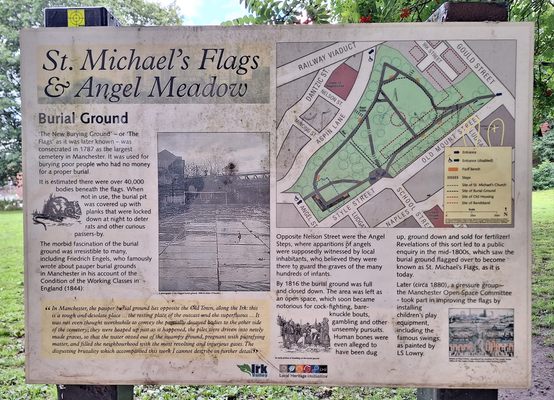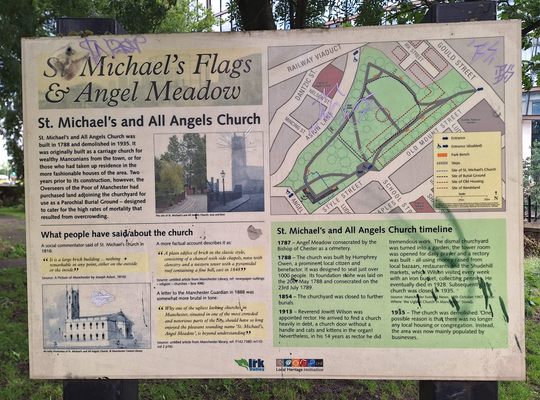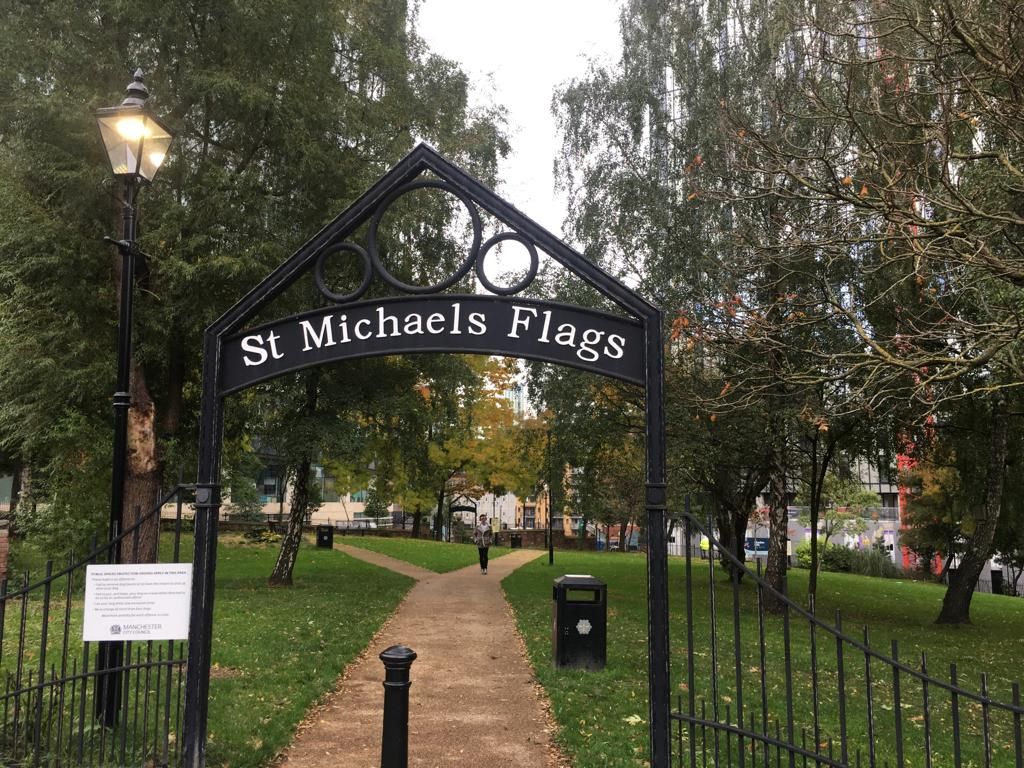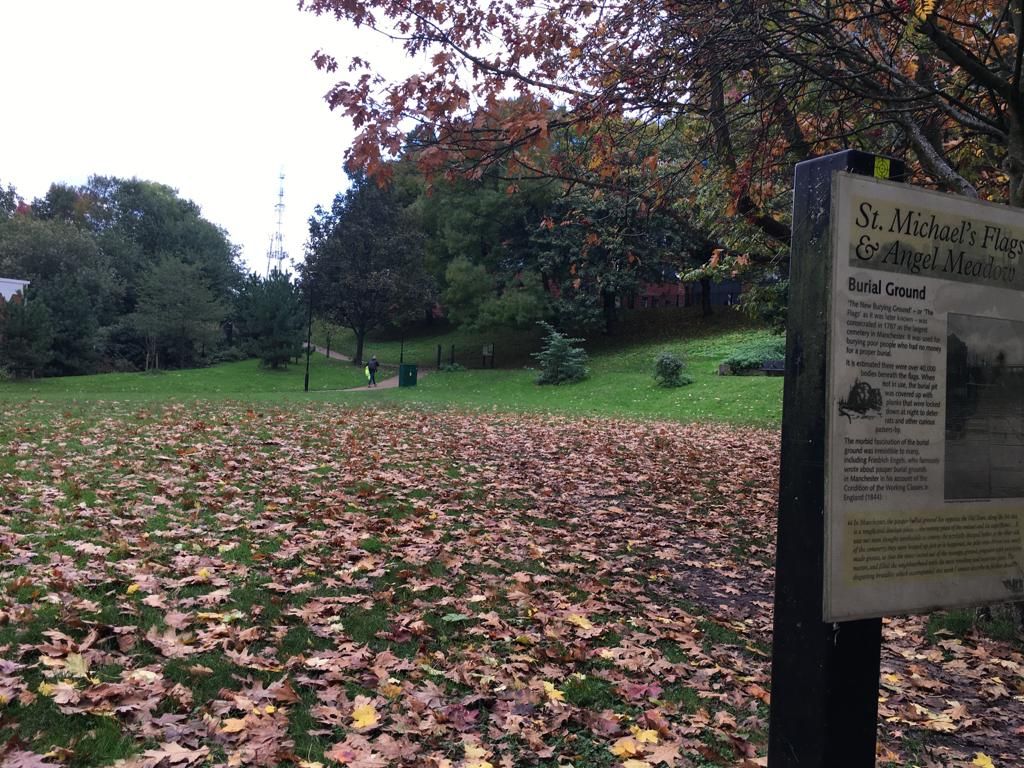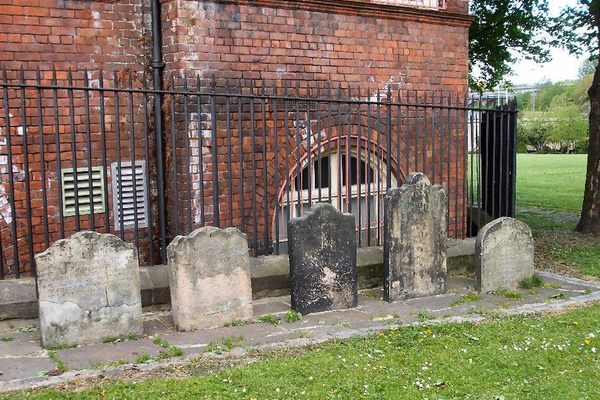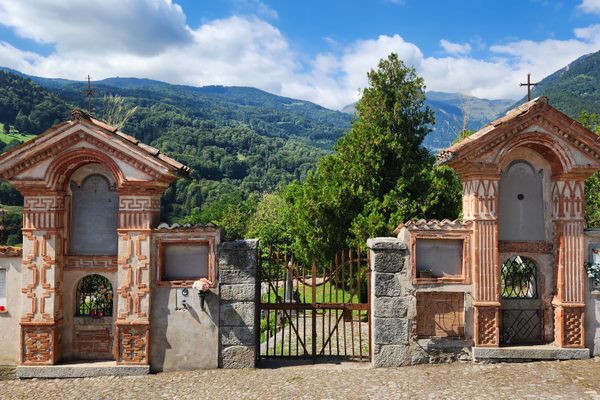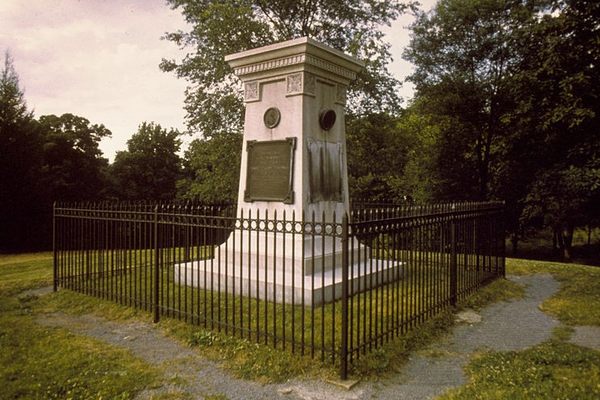About
Only a stone's throw from Manchester's city center, this public park was, through the 18th century, a prosperous neighborhood with contemporary Georgian houses overlooking the surrounding countryside. Towards the end of the century, in 1788, St Michael and All Angels' church was built. Within 20 years however, the industrial revolution had entirely altered the area's demographic and appearance. In only a few decades, the church came to be described in a local newspaper as “one of the ugliest churches in Manchester situated in one of the most crowded and notorious parts of the City…"
With over 30,000 people, many destitute and living in overcrowded houses and cellars, the area became rife with disease and squalor. It is said that cockroaches were readily accepted, as they would eat the rampant bed bugs. Unsurprisingly, the death rate rose significantly, at times reaching 175 percent of the national average. What was once a small parish churchyard became the largest cemetery in Manchester. Outcast and unable to afford a proper burial, around 40,000 individuals were buried in mass graves and burial pits on the land, many of which were added to heaped piles before all being buried together.
It was this heart wrenching “hell on Earth” that Friedrich Engels refers to being struck by when he arrived in Manchester in the 1840s. Engels, who co-authored the Communist Manifesto alongside Karl Marx, described witnessing how “water oozed out of the swampy ground, pregnant with putrefying matter, and filled the neighbourhood with the most revolting and injurious gases.”
Learning to live in such an environment, tales tell of tasteless entrepreneurs selling the soil to farmers as fertilizer. One report even recorded children using a human skull as a ball to kick about the grounds. Though Angel Meadow Park was perhaps the most notorious, many spaces had deteriorated to such a grim situation across the country, and so in 1855, the Burial Act was passed by the British parliament. This act entailed that graveyards should be covered by flat stone slabs, or flagstones, and so the area of St Michael’s Flags acquired its name.
How Angel Meadows acquired its surprisingly seraphic name is somewhat more of a mystery. While some suggest the land was originally owned by the nearby Angel pub, others have offered a more supernatural explanation. To access the meadows from lower streets, one must ascend Angel Steps. These steps were, legend says, the site of many celestial visitors, believed to have been standing guard of the graves of countless tragic children.
Even after being closed to burials and covered over by flagstones for 30 years, during periods of heavy rain, bodies continued to be washed down hill. To combat this, in 1888 the entire space was enclosed by a wall and since this time St Michael's flags became a popular park and football ground for local children, including 1966 World Cup winner Nobby Stiles, and is now a popular and peaceful greenspace within the growing city.
Related Tags
Know Before You Go
From Style Street or Angel Street, go under the sign for St Michael Flags to see the gravestones. They're laid in a corner around a bench.
It's walkable from town, or at weekends there is limited parking around Dantzic Street. Parking is also available nearby at the AO Arena.
There is level access from Style Street, but the site slopes away down towards the railway.
Community Contributors
Added By
Published
December 6, 2021
Sources
- D.Kirby, Angel Meadow: Victorian Britain’s Most Savage Slum (Barnsley: Pen and Sword Books Limited, 1988),p.xi
- Forgotten Fields: Looking for Manchester's Old Burial Grounds by John Marsden.
- The Condition of the Working Class in England by Friedrich Engels (1844).
- The Gangs of Manchester by Andrew Davies
- https://en.wikipedia.org/wiki/St_Michael%27s_Flags_and_Angel_Meadow_Park
